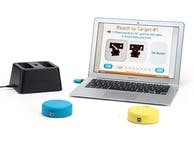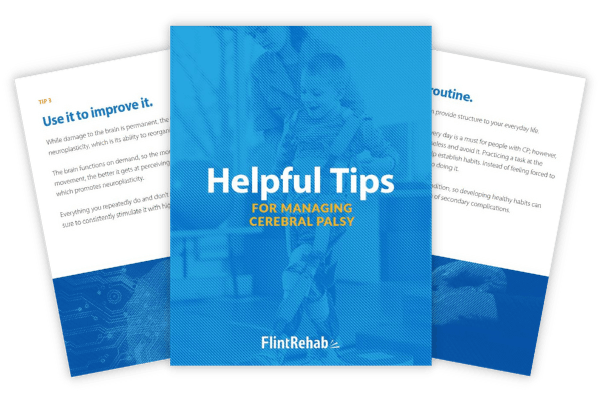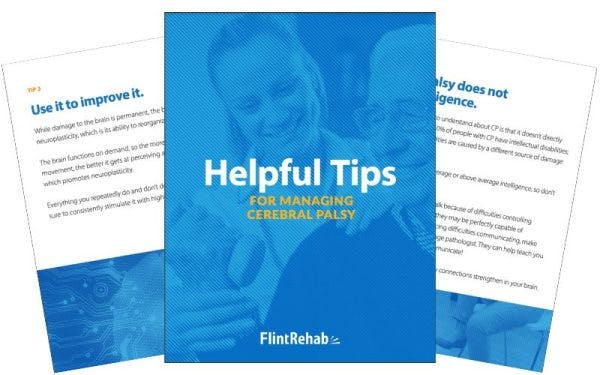Wondering what the best natural remedies for cerebral palsy are?
Because cerebral palsy is a motor disorder that starts so early in life, parents might be hesitant about giving their children medications with potentially harmful side effects.
Turning to low-risk, non-invasive natural remedies for cerebral palsy management might just be the way to go.
The 7 Best Natural Remedies for Cerebral Palsy
Natural remedies can help relieve symptoms of cerebral palsy like pain, spasticity, and stress.
We’ve put together a list of 7 natural treatments that can promote physical and mental wellbeing in individuals with cerebral palsy.
Let’s get started!
1. Essential Oils

Essential oils are concentrated oils extracted from plants.
They can be massaged into the skin (after being diluted) or inhaled for therapeutic benefits.
Aromatherapy helps stimulate the hypothalamus, which regulates hormones.
Although they’re a ‘hit or miss’ intervention, essential oils are definitely worth trying because they’re relatively affordable and have a very low risk of side effects. Some popular options include lavender oil and peppermint oil.
Lavender oil is widely used for its calming, antidepressant, pain-relieving, and neuroprotective properties.
Peppermint oil can help stimulate the brain to improve memory and concentration. When massaged into the skin, it helps calm the nerves and soothe pain.
2. Diet

What you put into your body plays a huge role in the way you feel and how your body functions.
Many people with cerebral palsy experience cognitive impairments (50%) and digestive problems.
Foods high in omega-3 fatty acids like salmon and walnuts help promote healthy brain function. They’re also anti-inflammatory agents that help reduce risk of illness.
Probiotics can be found in fermented foods like yogurt and apple cider vinegar. They promote digestive health by increasing healthy bacteria in the gut.
Drinking herbal teas can also help regulate mood and energy levels.
Find out what the best foods to add to a cerebral palsy diet are »
3. Exercise
Due to impaired mobility, children with cerebral palsy tend to be less active than children without.
Movement is essential for preventing learned non-use, maintaining circulation, and promoting overall health.
Physical activity helps stretch tight muscles, strengthen underused muscles, and expand range of motion in the joints.
Although any kind of exercise is beneficial, children with cerebral palsy will likely be more motivated to participate in fun, activity-based, and engaging physical exercises.
Being physically active can also reduce stress and lead to an improved sense of wellbeing.
Discover fun exercises for children with cerebral palsy »
4. Yoga

Yoga is an ideal exercise for individuals with cerebral palsy because it incorporates deep breathing, meditation, and body positioning into a single activity.
Deep breathing helps ensure that ample amounts of oxygen are being delivered throughout the body, which helps promote healthy cellular functioning.
Meditation helps you organize your thoughts so that you feel less stress and anxiety. It also helps you manifest positive energy.
The poses performed in yoga are called asanas. They’re designed to promote the flow of energy throughout the body.
These asanas range in difficulty and will help gently stretch and strengthen the muscles. Poses can be adapted to each individual’s abilities, and yoga can even be practiced from a wheelchair.
Children may enjoy “animal yoga”, where poses are associated with a type of animal. Yoga cards can be purchased, which can be a kid-friendly, game-like way to encourage trying different poses.
5. Cold and Heat Therapy
Cold inhibits spastic muscles, while heat relaxes them.
Although the effects are short-lived, both cold therapy (cryotherapy) and heat therapy (thermotherapy) can help individuals with cerebral palsy manage their high muscle tone.
Cold therapy is ideal for reducing swelling and inflammation. It causes the blood vessels to constrict, which reduces blood flow to the site of pain and helps numb the pain.
In contrast, heat therapy is better for promoting circulation and soothing spastic muscles.
Some individuals prefer primarily using heat or cold, while others like to alternate between the two to gain benefits of both.
Intensive cold or heat therapy is not recommended to be used with those who are unable to express themselves, as burns or other skin damage could result.
6. Massage Therapy

Massage therapy is a popular treatment used to promote relaxation and soothe tight, overworked muscles.
It’s ideal for individuals with cerebral palsy because it can help treat CP symptoms like:
- spasticity
- poor circulation
- anxiety
- pain
- restricted range of motion
Massage involves manually relaxing tight muscles to promote better mobility and mental health.
7. Epsom Salts
Bathing in Epsom salts may help relieve the pain and inflammation caused by cerebral palsy.
Epsom salt is also known as magnesium sulfate.
In this study, pregnant women who were at risk of premature delivery (a common cause of cerebral palsy) that were given magnesium sulfate had significantly lower rates of giving birth to children with cerebral palsy than the group given the placebo.
For a child with cerebral palsy, soaking in an Epsom salt bath will help soothe inflammation, reduce stress, and relieve constipation.
Understanding Natural Remedies for Cerebral Palsy

Natural remedies can be just as effective as pharmaceutical ones, but that does not mean they will work for everyone.
However, they’re worth trying before committing to medications because they’re relatively affordable and have minimal risks.
Natural treatments for cerebral palsy promote holistic health and are generally safe for long-term use.
Many of these options (like consuming a nutrient-rich diet and exercising regularly) are things that you should already be doing to optimize your health.
Now that you know what some of the best natural remedies for cerebral palsy symptoms are, we hope you give them a shot. Good luck!











